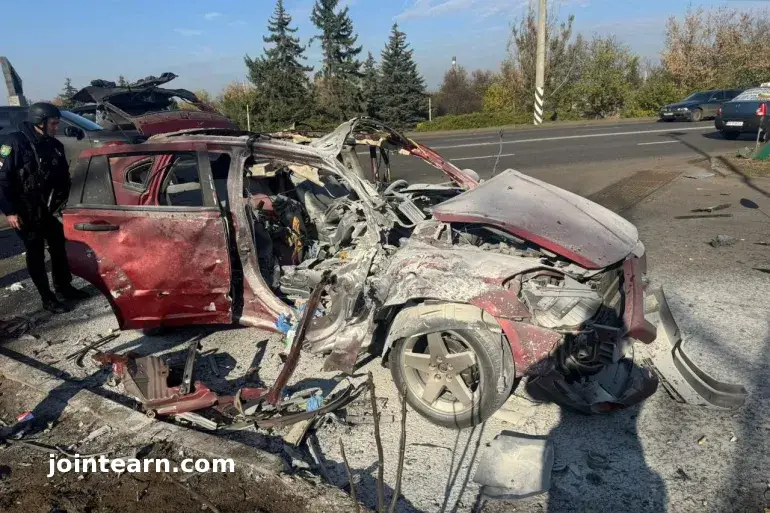
In a tragic escalation of the war in eastern Ukraine, two Ukrainian journalists were killed and another injured when a Russian drone struck their vehicle in the industrial city of Kramatorsk, Donetsk region, on Thursday. The attack highlights the increasing risks faced by journalists covering frontline conflicts.
Details of the Deadly Drone Strike
Freedom Media, a state-funded Ukrainian outlet, reported that Olena Gramova, 43, and Yevgen Karmazin, 33, were killed when a Russian Lancet drone targeted their car at a petrol station in Kramatorsk. Another reporter, Alexander Kolychev, survived but was hospitalized with injuries.
Images posted by the Donetsk regional governor showed the charred remains of the vehicle, confirming the severity of the strike. Authorities have condemned the attack and called for stronger protections for journalists operating in conflict zones.
Profiles of the Journalists
- Olena Gramova: A native of Yenakiieve in Donetsk, Gramova initially trained as a finance specialist before switching to journalism in 2014, the year Russia annexed Crimea and began supporting separatist movements in the Donbas. She was known for her fearless coverage of evacuations, frontline combat, and civilian experiences.
- Yevgen Karmazin: Born in Kramatorsk, Karmazin joined Ukraine’s international broadcasting channels as a cameraman in 2021. His work focused on documenting the human cost of the war and frontline operations.
The Kyiv Post noted that both journalists “were there from day one, covering evacuations, war crimes, and soldier stories,” emphasizing their commitment to frontline reporting despite the dangers.
Kramatorsk: A Dangerous Frontline Hub
Kramatorsk, with a pre-war population of around 150,000, remains one of the few civilian hubs in Donetsk still under Ukrainian control. Russian forces are approximately 16 kilometers from the city, prompting mandatory evacuations for children in some areas.
The proliferation of cheap but lethal drones on both sides has made reporting from the front increasingly dangerous. Earlier this month, French photojournalist Antoni Lallican was killed by a targeted drone strike near Druzhkivka, also in Donetsk.
Rising Toll of Journalist Deaths
The deaths of Gramova and Karmazin bring the total number of journalists killed in Ukraine since 2022 to at least 19, according to the Committee for the Protection of Journalists. UNESCO reports that 23 media workers have died on both sides of the frontline, including three Russian state media journalists.
Globally, journalist deaths in conflict zones have reached alarming levels. For example, in Gaza, Israeli forces have targeted media personnel, resulting in over 270 journalist fatalities since the start of hostilities, surpassing historical deaths in major wars combined, according to Brown University’s Costs of War project.
Implications for Press Freedom and Safety
This latest attack underscores the escalating threats to press freedom in warzones where modern drone technology enables precise, deadly strikes. International organizations have urged both sides to respect the safety of journalists and warned that such attacks could constitute war crimes under international law.
As the conflict in eastern Ukraine intensifies, the international community continues to monitor the situation closely, calling for greater protection of journalists who risk their lives to report on the human and political realities of war.


Leave a Reply